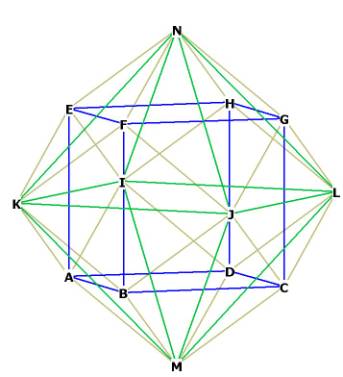|
(2017
midterm assignment) Model Student Midterm answers 2016 (Index) Essay 3: Web Highlights |
 |
Anari Oliver
Oh, Men will be men!
While
searching through previous assignments, I was elated to see that there were a
number of essays pertaining to woman and their femininity. In some instances,
there were pieces that also touched on the violence and sexualization of women.
Being that anything dealing with both feminism and womanism tickles my fancy; I
thought to myself….Why not pursue the topic?
Timothy Morrow elaborates on the hypersexualization of June depicted in
Stone Lives by Paul Di Filippo in his short essay titled All Lilies Wither:
Analyzing Violence towards women in Science Fiction. The following excerpt stood
out to me and acted as my driving force: “Yet, when Stone shows up in the story,
she is instantly subjected to the male’s perception of her being a submissive
sexual being, rather than someone with more value and experience. When he asks
her for her name, she gives it and he instant replaces her surname with his own
first name (Filippo).” I found his essay to be great all around, and his
interpretation of what took place in the story is right on point. However, I
will admit that I didn’t notice how much the author objectified June at first
glance. Morrow provides a serious tone (since this subject is no joking matter)
that made me feel the passion of the essay at the core.
Changing up the tone a bit in Nikki Jones’ essay titled The 3 Narratives
Hand-in-hand, we shift over to the alternative-narrative story of Better Be
Ready ‘Bout Half Past Eight. This story in particular tangos with both
hypersexualization of women and hypermasculinity by using them in a way that
later shows two sides to the same coin. Jones states “He tells his wife that
“Zach wouldn’t be Zach” after the operation, meaning he would not be the same
person because of his physical changes but later when Byron is experimenting
with his own gender fluidity by wearing makeup he tells, the now Zoe, that even
though his outward appearance is altered he is still “the same old me, though.”
I appreciate the part where Jones’ talks about makeup because it is usually
equated with a woman’s femininity. We often see in old Hollywood films how women
who are more “dolled up” (tight-fitted clothing, nice hair, makeup, jewelry,
etc..) are objectified more frequently than women who aren’t as “girly.” Marilyn
Monroe would be a perfect example of this as she remains a sex symbol for many
men. I inferred that Jones’ used this excerpt from the story to show how Byron
may have found a slight attraction to Zach (Zoe) after seeing how makeup
transformed him.
Another essay that caught my eye was Myriad Possibilities by Paul
Acevedo. The language of the essay is very clear and precise, which made it easy
to spot a line that fits perfectly into my work. The entire essay also flows
together chronologically that helps the reader easily comprehend intense topics.
He provides a biblical scripture that reads “The woman, a prostitute, represents
carnal sins; the beast’s red color can symbolize blood, fire, sin, and anger;
its seven heads echo the number of perfection established in Genesis.
Thus the woman and beast are a sublime pair – beautiful, perfect, and deadly.”
He uses this scripture from Revelations as a way to set the mood for the
creation/apocalyptic theme, which works well and brings me to my next point.
Being brought up in the church and an avid bible reader, while still being a
woman with her own mind, has made me realize that biblical text can be somewhat
degrading of women. We often see text like Acevedo used to elicit a woman’s
femininity and physique by referring to her looks, while simultaneously keeping
the “alpha male” idea alive, which only reinforces hypermasculinity.
In conclusion, a woman’s femininity is something that has existed since
the beginning of time. The brief lines that I chose to use set a foundation for
my web highlight. There’s a lot that can be learned from student to student
interaction since instructors don’t always illustrate certain points. From the
previous model essays, I learned that many narratives touch on both the
objectification and femininity of women, but it can be easily overlooked if it’s
not actually being searched for.
 |
 |
 |
